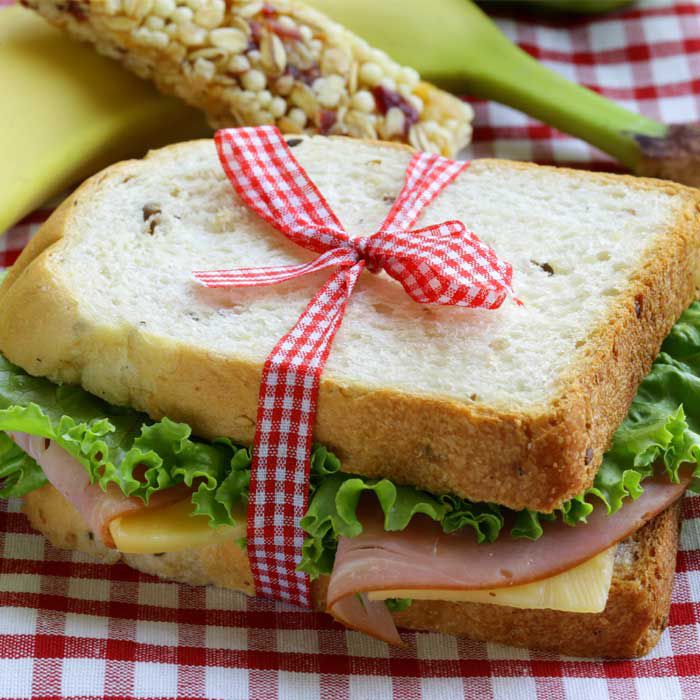
Whether you batch-cook every Sunday or find time to throw something together as you're headed out the door, any time you pack your lunch instead of buying something from a food truck, take-out place, or worse, the vending machine, it counts as a win in our book.
Still, your DIY lunch may not be quite as healthy as you think, says Sarah Krieger, R.D.N., spokesperson for the Academy of Nutrition and Dietetics. She ID'ed the most common nutritional mistakes people make when brown-bagging it, and gave advice on how you can avoid them.
Beware of Packaged Foods
Protein bars, single-serve packets of nuts, string cheese, mini-cans of tuna… These things are all great healthy, time-saving additions to your lunch bag-just not all at once, says Krieger. Even healthy prepackaged foods aren't as good for you as homemade fare, and the less-nutritious options are sky-high in sodium, preservatives, and other not-so-great ingredients. These foods should be a supplement to your lunch, not the foundation of it.
Don't Forget the "Plate Rule"
You may not ever actually place your packed lunch on a real plate, but the 50/25/25 rule should remain in place, says Krieger. Meaning: If you were to plate your food, fruit and veggies should cover half of the imagined flatware, a protein (chicken, beans, cottage cheese) should take up a quarter, and a whole grain should fill in the remaining 25 percent. (Need some inspiration? Check out these 31 grab-and-go meals!)
Include Plenty of Protein
If you don't pack enough food, you'll be scrounging up quarters for a vending machine run by 3 p.m., warns Krieger. "A baggie of gluten-free pretzels or popcorn and a salad only with lettuce, cucumbers, and tomatoes equals hunger within two hours." She suggests your lunch should total 500 to 700 calories and incorporate lean protein, fruit, whole grains, and a bit of healthy fat to keep your stomach from growling.
Refrigerate ASAP
Your lunch should never sit unrefrigerated for more than two hours (longer can encourage infectious bugs to thrive), so stash it in a fridge as soon as you get to work, or pack it in a cooler with a couple freezer packs or frozen water bottles if you don't have access to a fridge. And if you have a reusable bag, wash it, stresses Krieger. "Reusing the same container without bleaching or cleaning it lets bacteria breed, which can lead to food-borne illness." Some bags can be tossed in the dishwasher. If yours can't, give it a thorough scrub with disinfectant soap after every use.



































